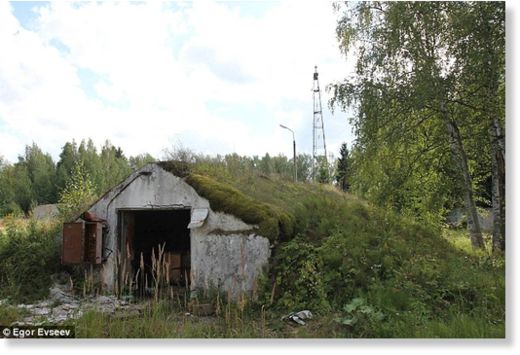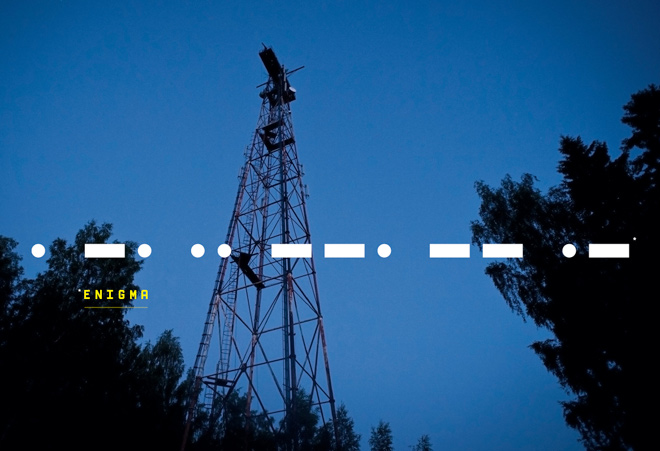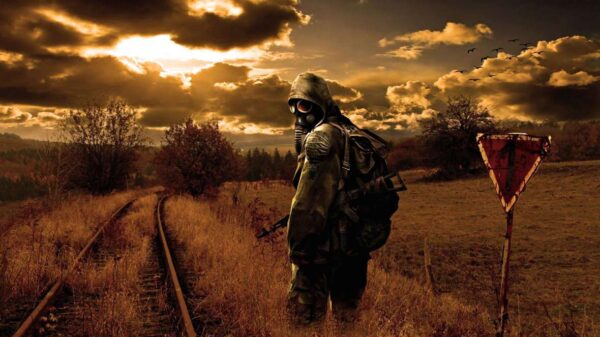Jonathan O’Callaghan The Daily Mail
Suddenly the piercing buzzing noise that has continued incessantly for months stops. A cold voice takes over.
‘U-V-B-7-6,’ is read out in a thick Russian accent, before listing a series of code words and numbers. Then, just as suddenly, it ends. The buzzing returns, for another few months.
That is what has greeted listeners of a mysterious radio station nicknamed ‘The Buzzer’ – and code named UVB-76, or more recently MDZhB – since the 1970s.
But what the Buzzer is doing, or who is broadcasting it, remains a mystery – with theories ranging from the Russian military to atmospheric research.

© websdr.ewl
A Russian radio station has played a buzzing sound on frequency 4625 kHz (shown) for four decades. Every few months it is interrupted by a voice relaying a coded message. But no one knows the exact purpose of the station or the message. Some say it is a military station, or a counter-attack measure for nuclear war
The Buzzer is a shortwave radio station of unknown origin.
Although its noise has changed slightly over the preceding 40 years, it has always involved some form of regular buzzing, interrupted by a voice on rare occasions seemingly reading out a message.
Today, 25 times every minute, it spends less than a second buzzing, pauses, then buzzes again – endlessly.
The noise rings out on a frequency of 4625 kHz, which anyone is able to listen in on, including online at one of several live streams.
For years the transmission seemed to originate from the town of Povarovo near Moscow but, in September 2010, the location changed. Now, it is believed to be in Western Russia.
According to the website Numbers Station, the Buzzer ‘works as a communications center within the Western Military District that sends messages to corresponding military units and their outposts.’
The Buzzer has spawned many websites and blogs like this, with amateur radio enthusiasts the world over becoming intrigued by its unsolved mystery.
Ryan Schaum, an engineering student from Pittsburgh who runs the Numbers Station website, said he first became interested in The Buzzer a little over a year ago.
‘I first saw what it was in a YouTube video and became fascinated with its mystery,’ he said.
But he admits he hasn’t attempted to crack the code yet, saying: ‘These messages cannot be decoded by anyone who they do not intend them to be for.
‘Without access to the codebook, there is no way to tell what they are sending.’
It’s believed that the station is a way of secretly communicating with spies without the message being tracked or intercepted.

© Egor Evseev
Student Egor Evseev visited the old site believed to house UVB-76 in the summer of 2012. He says the area consisted of abandoned and partially destroyed buildings, with ripped up cables suggesting it was once a transmission centre. The location of the station is believed to have moved in 2010
Despite anyone being able to listen to the station, depending on their radio coverage where they are in the world, the code used is a complete mystery.
There is no perceptible shift in the pattern of the buzzing, and no indication that a voiced message is imminent.
All the messages, though, are in the same format. They usually began with a collective callsign, which until 2010 was UVB-76 or UZB-76. Four years ago, though, a voice came on the air and changed the callsign, which is now MDZhB (with ‘Zh’ being a single letter in Russian).
Many, though, continue to refer to the station as UVB-76.
The station also once broadcast a time signal, with a one-minute long two-tune buzzer sounding at the top of every hour. This was disabled in June 2010, and no time signal has taken its place.
Interestingly, codes have also been repeated over months or years, for reasons unknown. On 26 January 2011 the operator read out ‘ILOTICIN 36 19 69 46.’ This was repeated almost four months later, on 11 May 2011.
The frequency of the voiced transmission is also not regular. Before 2010 it could take months or even years between messages.
Following 2010, though, messages were heard as often as every few weeks, sometimes occurring on or near significant events.
For example on 18 March 2014, less than 24 hours after Crimea voted to join the Russian Federation, the voice read out: ‘T-E-R-R-A-K-O-T-A. Mikhail Dimitri Zhenya Boris [MDZhB, the callsign of the station]. Mikhail Dmitri Zhenya Boris. 81 26 T-E-R-R-A-K-O-T-A.’

© Egor Evseev
Although its noise has changed slightly over the preceding 40 years, it has always involved some form of regular buzzing, interrupted by a voice on rare occasions. Some believe the station is operated from a bunker somewhere (image from abandoned site), with an official relaying a message now and again
And in November of this year there were 28 separate voice messages broadcast over the network.
It was also around 2010 that the location of the transmitter was believed to be moved, from near the town of Povarovo, not too far from Moscow, to near Pskov, on the border with Estonia.
Russian student Egor Esveev, 20, who originally comes from Moscow but now studies in Ottawa, told MailOnline how he explored what he believes was the previous site near Pskov.
‘Like any abandoned building or area it was very creepy,’ he said.
‘Strange people and very strange scenery.’
‘There was a man on a bike that came from the road that lead to nowhere other than forest, he wasn’t carrying anything and headed in the direction of a field which I know has nothing at all for miles and miles.
‘The second creepy person was a mid-40s woman, she was with a stroller. At first I thought that she is a resident of the town out for a walk but as she walked past I saw that her stroller was empty.
‘Who goes to an abandoned military base with an empty stroller for a walk?’
He said the station was set up like a ‘typical Russian military base’ with two different perimeters.
Most of the buildings, some half underground, were destroyed or abandoned according to Mr Evseev, while cables in some areas had been visibly torn from the ground.
‘We found tons of rubbish documents,’ he added. ‘One that we found was interestingly enough about ceasing operations of the base.’
He thinks that the station may be used for some form of internal communication that, ‘while secret, isn’t sensitive enough for them to care about masking or keeping it secret.’

© Mail Online
In 2010 the location of the Buzzer was moved from near the town of Povarovo, not too far from Moscow, which was explored by Mr Evseev, to an unknown location Pskov, on the border with Estonia (shown). The estimated location of its new position is based on triangulation of the signal from radio enthusiasts
Others have speculated that this is a secretive Russian communications network used to communicate either with the military, or with spies around the world.
‘The buzzer is a legend. Many odd stories have been told about it,’ 60-year-old freelance radio monitor Ary Boender from Holland, who runs the website Numbers Oddities, told MailOnline.
‘It is a strange station according to may people, it buzzes but there were no other kind of transmissions.’
‘Some say that it is an old Soviet Dead Man’s Switch that triggers a nuclear attack on the west when it stops buzzing.
‘In the past it was said that it was a remote control station belonging to the Chernobyl nuclear power plant. Others say that it is a homing beacon for UFOs, or a mind control device with which the Russians can program your mind.’
But, according to Mr Boender: ‘It’s all nonsense of course.
‘When the buzzer stopped buzzing on Sept 1, 2010 many of the conspiracy fans thought that it was the end of the world. But no nuclear attack followed nor did the UFO’s land.
‘The truth is that they moved their transmitters from Povarovo to the site near St Petersburg.’
Mr Boender is adamant this was the result of a large reorganisation of the Russian forces, and is certain the radio station is of military origin.
He added that other stations are thought to be run by other militaries around the world, including in the US and China.
These types of transmissions are beneficial because they can be used in place of a satellite system for long-distance communication if necessary.

© Numbers station
Mr Schaum supplied MailOnline with a logbook of messages written down, apparently taken from the old site in Povarovo. He explained this showed ‘their daily work schedule and samples on how to write the actual logbook. It’s interesting to look at, but it’s in Russian and we haven’t gotten around to translating it’
There is some disagreement on the source of the buzzing, though – whether it is a physical buzzer placed next to a microphone or an electronic signal.
It is known that the voice that speaks on the radio is live, leading some to believe the actual buzzer is located in a basement somewhere, with a microphone nearby.
This is known because occasionally the operator must correct themselves, saying the word ‘sboj’ (‘error’ in Russian), before continuing.
In addition, on extremely rare occasions voices have been heard talking in the background of the buzzer.
On 3 November 2001, for example, a microphone was mistakenly left open and, translated from Russian to English, listeners heard: ‘I am 143. Not receiving the generator (oscillator),’ followed by: ‘That stuff comes from hardware room.’
Mr Boender, though, thinks the buzzing noise is not a device next to a microphone, but rather an ‘electronically generated noise fed directly into the transmitter’.
Mr Schaum however, disagrees.
‘The buzzing noise is believed to be fed through a live microphone,’ he said.
‘Some evidence that the buzzing sound is fed through a live mic is that voices, footsteps, and so on have been heard there.’

© Egor Evseev
Mr Evseev said he found the abandoned location very eerie. ‘Like any abandoned building or area it was very creepy,’ he said.’Strange people and very strange scenery. There was a man on a bike that came from the road that lead to nowhere other than forest, he wasn’t carrying anything and headed in the direction of a field’
Whatever its method of producing a sound, its purpose also remains a mystery.
‘[The] Buzzer, being strong in Europe and triangulation results showing it near the Estonian border would suggest it to be serving the Western Military District,’ speculates priyom.org.
‘It is worth noting that all messages are sent in AM-compatible modulation meaning that even a very simple receiver is suitable for the reception.
‘For the same reason messages are sent in voice, allowing unskilled operators to successfully handle radio traffic.’
However, in April 2008 a report from the Borok Geophysical Observatory suggested they had used the exact same frequency as the Buzzer – 4625 kHz – to perform ionospheric research.
They performed Doppler measurements, sending a carrier wave on that frequency to see how it travelled through Earth’s ionosphere.
In their paper they wrote: ‘High-frequency Doppler method for ionosphere researches is based on observation of frequency variations of the radio wave reflected from ionosphere inhomogeneities, changing in time and in space.’
Doing this can detect changes in the ionosphere from the sun, as well as atmospheric and seismic events from natural and artificial sources.
Shortwave transmissions like this allow the signal to be spread over great distance by reflecting off the ionosphere.
It’s unclear why they would have used this particular transmission for their experiment – or who granted them permission to do so – but regardless it seems this event may have been an anomaly in the history of the Buzzer.

© Egor Evseev
One of the more unlikely theories about the station is that it is a ‘Dead Man’s Switch’ system. In the case of a nuclear attack against Russia, UVB-76 would launch an automated counter-strike. Most experts, though, think it is a lesser military station. Pictured is another of the abandoned buildings explored by Mr Evseev
But despite all the theories and assurances, one thing remains a mystery: no one knows what the messages are saying or how to break the code.
So while theories might swirl about its origin, location and history, its true purpose remains confusing.
Whether this is really a Russian military station to communicate with a global network of spies, a scientific research station or simply a hoax may never be solved.
But what is known is that for four decades someone, somewhere, has approached a microphone and uttered a series of numbers and letters.
Perhaps they were sending a message to someone. One that always ended: ‘U-V-B-7-6.’





















